Thursday, August 1st, 2019 by Julian Karsunky
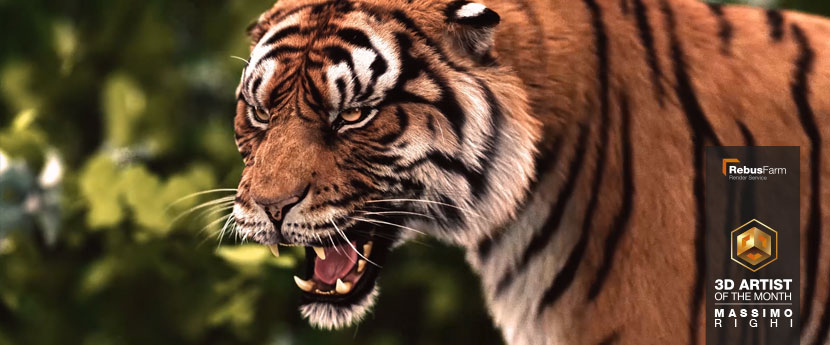
Put on your pith helmet, as Massimo Righi, our August 2019 3D Artist of the Month, is about to take you on a digital safari extraordinaire! A bookseller turned creature modeling artist, Massimo’s ever-growing library of virtual beasts has become the project of a lifetime. Mixing business with pleasure, he has successfully turned his love for nature and computer graphics into a veritable freelance career.
In our interview, Massimo talks about CG fauna, taking his own photo references and the importance of specialization.
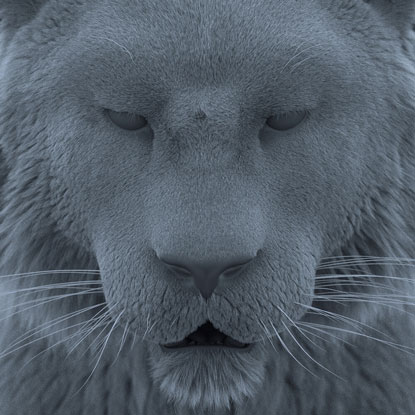 |
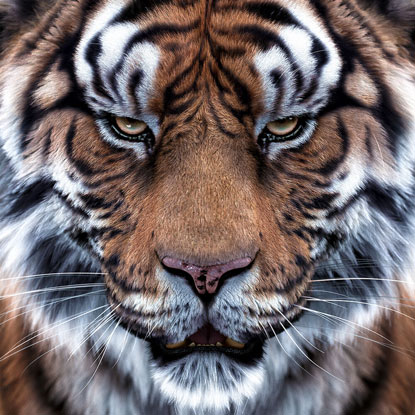 |
He’s our 3D Artist of the Month, hear him roar: Avid animal lover and gifted 3D modeler Massimo Righi puts a tiger in your tank!
Hi Massimo, thanks for joining us! To start things off, please introduce yourself to our readers!
Hi everyone, my name is Massimo Righi, I’m an Italian 3D artist currently living in Thailand with my wife and soulmate Silvia, who also works with me as a key artist. Interestingly enough, I owned a bookstore before fully committing myself to CG.
That sounds like a rather unusual change of careers! How did that come about?
Well, I’ve always loved visual arts. While I was selling books, my passion for computer graphics kept growing and growing. Unlike today, online resources were scarce back then, so I read every CG magazine I could get my hands on, cover to cover. At the same time, I began learning 2D and 3D software myself. I still remember Rhino 1.0 being my starting point, then later moving to Maya. So yeah, I’m entirely self-taught!
At some point in the early 2000s, together with my wife I decided to sell the bookstore and pursue a professional career as a 3D artist, so I started building my portfolio and looking for freelance jobs.
From selling books to selling 3D models – can you share some of your experience as longtime freelancer?
Freelancing is never easy, especially if you’re used to more traditional forms of employment. You must completely reinvent yourself to make it work.
As a freelancer, you take your fate in your own hands, which means a lot of freedom but a lot of responsibility as well. You call all the shots, and if you manage to establish yourself, you eventually get to choose the tasks that you prefer. In the beginning, however, you need to accept lower rates and take on different, sometimes even ‘weird’ projects, even if they don’t suit you very well. These times can be tough, but passion and drive will carry you, until you gain more experience and recognition.
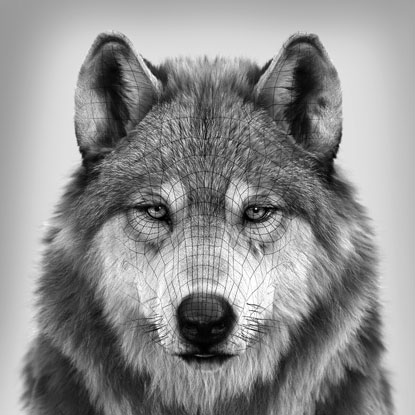 |
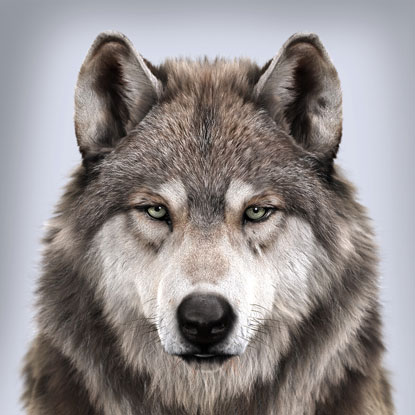 |
He who dances with wolves: This new addition to Massimo’s ever-growing collection of models and assets can be bought directly through his website.
Speaking of humble beginnings, do you still remember when you first broke into the CG industry?
Yeah, I remember my very first task: I answered an ad on Craigslist, this guy was looking for a few character models for his animated short. I was super excited, but worried at the same time, wondering if I was ready and skilled enough to take on a project. Thankfully, everything went well, the client was very happy with the results and I had the opportunity to be involved in a professional environment alongside concept artists, riggers and animators.
Since then, I was lucky enough to always have work. Even though animals were always my first choice, I modeled pretty much everything. In the first years, I did a lot hard-surface modelling. As a third-party, I collaborated with various industries, working with clients such as Volkswagen, Hyundai, Siemens and Savstar Paris amongst others.
By now, you have made a successful business of creating and selling realistic 3D models, encompassing the entire animal kingdom from dinosaurs to insects.
Between projects, I decided to start building a model library. I figured that would be a great way to keep practicing and maybe even establish an additional revenue stream selling my work on 3D marketplaces. I started selling models online in 2005, today I have about 400 assets available for purchase directly through my website.
My focus is creature modelling, texturing and grooming. In the years I built a network of professionals, allowing me to also offer rigging and animation services, if requested.
Would you say that this degree of specialization is a smart move for freelancing 3D artists?
Switching from general to creature modelling was a natural move for me, since I love animals and nature. Becoming too niche has never been a worry, on the contrary, occupying a niche was what allowed me to build a career and make a name for myself in the first place. Since there are plenty of 3D modelers, there’s a risk of the market becoming oversaturated, so specializing is the only way to go, in my opinion.
Your work has won you a plethora of awards and recognition. What are some of your personal highlights in your working life thus far?
One of my fondest memories is working as an external grooming artist for the Discovery Channel on a show titled ‘Discovering Ardi’. It was about the sensational discovery of a 4.4 million-year-old skeleton of Ardipithecus ramus. Being involved in bringing this extinct primal ape back to life on the screen was an amazing experience, overall.
Of course, winning my first CGSociety and 3dtotal awards back in 2006 was thrilling as well, and so was seeing my works printed in magazines and books. This type of recognitions always motivated me to keep improving and helped me through tough times.
I’m grateful for every single collaboration I ever had, each and every one helped me to grow not only as an artist, but as a person, too.
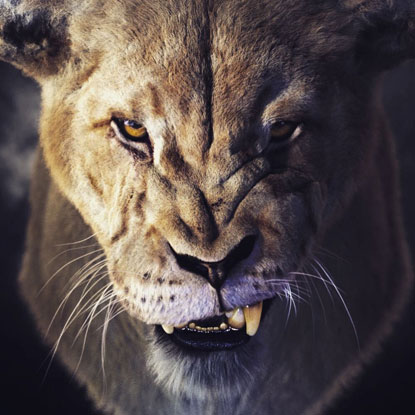 |
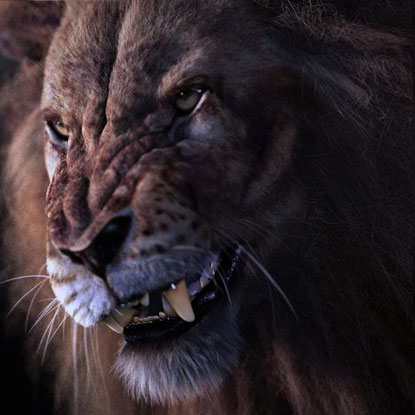 |
While Massimo has love for the entire animal kingdom, he is especially fascinated by wildlife. Lioness and lion in all their terrifying glory.
Before we discuss your work in more detail, I’d like to ask you more about your craft in general, starting with your favorite subject. Do you have pets yourself?
We had a dobermann dog in the past, but after she passed away, we decided not to have another pet. I don’t know if we will be able to resist the urge and stick by that decision. We both travel a lot and therefore can’t take care of an animal, so for the moment, all we can do is dream and model them!
Besides nature, are there other sources of inspiration for you as a 3D artist?
I draw inspiration from all forms of arts in general, from music to design and photography. I am very fond of the latter and like to take photos myself, which often end up as my main references when it comes to modelling and texturing.
Can you elaborate on your approach to reference material, including anatomical studies, and their overall importance to your work?
Reference material is crucial. I don’t want to entirely depend on external sources, so if I find the time, I visit animal sanctuaries to observe and take my own pictures and video footage. This is one of many reasons I choose to live in the beautiful and inspiring country of Thailand.
Researching anatomy is equally important. To get the right shapes and sculpt every detail, you need to take your time and study. Luckily, nowadays these kinds of references are easily found online. Still, I can’t resist picking up anatomy art books when I spot one on the shelves – must be some kind of occupational hazard, since I used to sell books in the past.
What skill set does a creature artist need?
Most importantly, the ability to train yourself. You need to learn how to make good use of your eyes, understand how to observe and develop an attention for details. Experience comes with time, so this is a long and sometimes even tedious process. But one day, you will look back at your older works and think to yourself: “I can’t believe how much I’ve improved!” This type of comparison is the only way to effectively measure your progress.
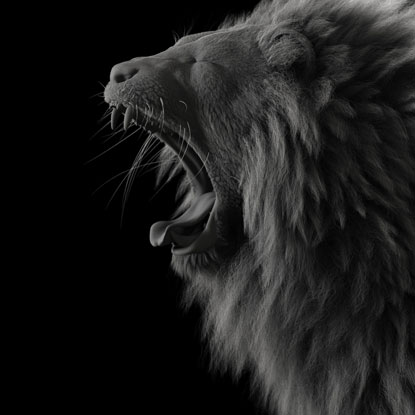 |
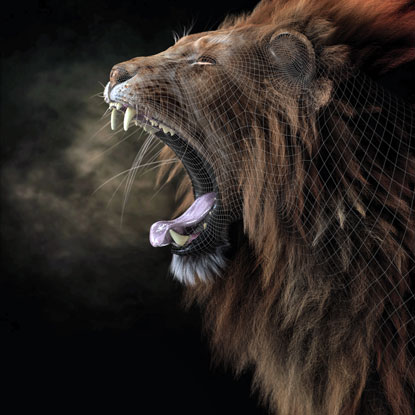 |
Sometimes, being king of the jungle can be exhausting. We’re sure Massimo was wide awake as he created this yawning lion. Check out the animated version here.
From fur to feathers to scales, you are very proficient when it comes to modeling, texturing, and grooming all sorts of demanding materials. Can you share some of your personal tips and tricks?
The model library I created over the years is a tremendous help for custom jobs, since I never truly have to start from scratch. From modelling to rendering, a customized animal usually only takes me around half a week.
Another thing I’d like to mention is presets. For every software I use, from Maya to Photoshop, I create presets: custom brushes for fur, custom shaders, lighting presets and so on. This makes the whole process significantly faster and easier to manage, allowing me to concentrate more on fine tuning and details.
Finally, some general advice: don’t stay cramped up in front of your computer for hours on end. It comes with the job, sure, but try to take a break from time to time, stretch, go outside! Once you return to your work, hopefully you can start again with a fresh perspective.
Now I’m sure you get this question a lot, though looking through your portfolio, I couldn’t help but notice a certain bipedal mammal is conspicuously missing…
Yeah, good catch! I’ve nothing against humans, personally (laughs), but I do tend to find animals more interesting. It’s a natural inclination for me but also a business choice. There are many exceptionally talented artists out there who focus on humans and humanoid characters already. And as I mentioned previously, I think finding your own niche and style is the only way to go.
Now let us talk about your work in more detail, namely the majestic roaring tiger you submitted to our monthly competition. Can you first describe the circumstances that lead to the creation of this piece?
Allow me to preface my answer to the question at hand with my personal history with the animal: the first time I saw a tiger in real life was back in 2005, during a visit to the Thailand Tiger Sanctuary. This encounter left a lasting impression on me, it’s such an amazing animal, an endless source of fascination. Ever since that day, I try to visit the sanctuary whenever I find the time. Sadly, the tigers there are not truly free, but it’s the only opportunity we have to see these beautiful creatures.
Now, to get back to your question, while the base model of the tiger is not entirely new, I specifically reworked it and created the animation to promote a new asset that I recently posted for sale.
What were some of the challenges you had to overcome?
In my field of work, the main challenge is always to capture the likeness and the peculiarities not only of that species, but the very specimen. In this case, each tiger is subtly different from the other.
In order to reach the desired level of realism, authentic or, at the very least, believable proportions are another key factor, so that is always challenging. Since the tiger was ultimately to be animated, getting the topology right was essential.
Because the tiger is one of those models I kept reworking over the years, I can’t really say how long it took to complete this version specifically. I guess you could say this is an ongoing project, and there probably will be further updates and iterations in the future!
Taking the tiger as an example, how do you approach creating a realistic model of an animal? Can you walk us through the entire process step by step?
The first step is always researching the subject matter. This usually includes looking for reference material, either online or through personal observation, if possible.
Everything from the base model and the UV unwrapping is made within Maya, which is my main 3D software. Then, I switch to Mudbox and ZBrush to export the displacement and normal maps and work on the details. Using a mix of photos and custom brushes, I next create the main textures with Photoshop and Mudbox.
Once the model is ready, I start grooming using the Shave and a Haircut plugin for Maya. From there, I begin lighting tests, first as a low render, then steadily increasing the settings as I get closer to the desired output. If necessary, I keep modifying the mesh during testing, since you usually can’t see flaws until you have the fur on.
Finally, fine-tuning and rendering. These are among my favorite parts – if I did my job well, I can finally see everything coming together, or better: coming to life!
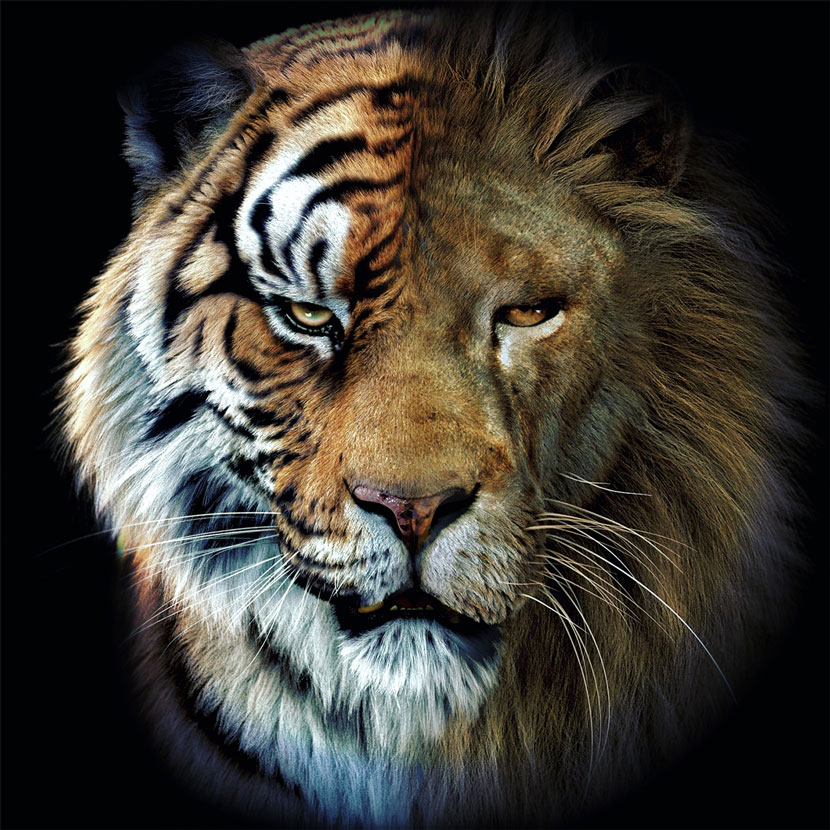 A liger? Not quite: Massimo tells us this tiger and lion mashup was just to “test something different”!
A liger? Not quite: Massimo tells us this tiger and lion mashup was just to “test something different”!
In closing, is there anything else you want to say? Any present or upcoming projects you’d like to mention?
There are a several exciting projects I’m currently involved in; unfortunately, I can’t disclose any details at this point in time. Furthermore, I’m collaborating with talented animators who are certain to make great use of my assets.
For those interested, please stay tuned and follow me on Facebook and Instagram, and you’ll be the first to know about any and all of my next endeavors!
Finally, I want to give thanks to both RebusFarm for giving me this opportunity and to you for reading!
The pleasure is all ours. Massimo, thank you very much for taking the time and all the best in the future!
Keep up with Massimo Rigi and his work here:
HOW TO JOIN OUR MONTHLY CONTEST
You want to be our next featured 3D Artist of the Month and win 250 RenderPoints? Just visit our 3D Artist of the Month competition page and submit your entry. We'll choose the best image and contact the winner.
>> Read more articles on our blog
